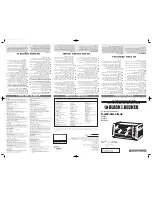
15
2.2
CONVENTIONAL VENTING (INDOOR) INSTALLATIONS
•
The Avenger is approved as a category II appliance and is approved for venting into a common chimney. On single appliance
installations with dedicated chimney, if drafts are excessive (above negative 0.15 inches W.C.), a single acting barometric
damper is recommended.
•
A qualified professional using a proven vent-sizing program with input of accurate operating parameters must properly determine
sizing of the venting system. In applications where flue gas temperatures are lower than can support a Category II with
conventional negative draft, it will be determined at the venting design stage that a positive pressure will be developed in the
vent. It will then be necessary to either provide separate vents as for Category IV, pressurize the room or to provide an extractor
at the chimney outlet interlocked with the appliance operating circuit in order to maintain a negative draft in the chimney and
allow common venting.
•
Approval of the installation will be at the discretion of authorities having jurisdiction.
IN GENERAL
•
The operation of exhaust fans, compressors, air handling units etc. can take away air from the room, creating a negative pressure
condition leading to reversal of the natural draft action of the venting system. Under these circumstances, an engineered air
supply is necessary.
•
If the appliance is to be installed near a corrosive or potentially corrosive air supply, the appliance must be isolated from it and
outside air should be supplied as per code.
•
Potentially corrosive atmospheres will result from exposure to permanent wave solution, chlorinated waxes and cleaners,
chlorine, water softening chemicals, carbon tetrachloride, halogen based refrigerants, Freon cleaning solvents, hydrochloric
acid, cements and glues, masonry washing materials, antistatic fabric softeners, dry cleaning solvents, degreasing liquids,
printing inks, paint removers, etc.
•
The equipment room MUST be provided with properly sized openings to assure adequate combustion air and proper ventilation
when the unit is installed with a proper venting system.
2.2.1
AIR REQUIRED FOR COMBUSTION AND VENTILATION
If air is taken directly from outside the building with no duct, provide two permanent openings:
a) Net free area for combustion air opening shall be in accordance with all applicable codes. In the absence of such codes, provide
combustion air opening with a minimum free area of one square inch per 30,000 Btuh input (1.3 cm per kW) of the total rated
input of the power burner. This opening must be ducted no higher than 18” nor less than 6” above the floor. Provide a ventilation
air opening located as high as practical in the room sized no less than 10% of the air supply opening.
b) Provision for combustion and ventilation must be in accordance with:
•
Applicable sections of The National Fuel Gas Code ANSI Z223.1
•
Applicable sections of CAN/CGA B149 installation codes
•
Applicable provisions of the local building codes
NOTE
Outside air openings shall directly communicate with the outdoors
CAUTION
Under no circumstances should the mechanical room ever be under a negative pressure. Particular care should be taken where
exhaust fan, attic fans, clothes dryers, compressors, air handling units, etc., may take away air from the unit.
2.2.2
EXHAUST FANS
Any fan or equipment which exhausts air from the equipment room may deplete the combustion air supply and/or cause a downdraft in
the venting system through a barometric damper if installed. Spillage of flue products from the venting system into an occupied living
space can cause a very hazardous condition that must be immediately corrected.
2.3
OUTDOOR VENTING (Pending)
The Avenger windproof cabinet protects the unit from weather, when fitted with the factory supplied air intake and UL approved vent cap
(93.0298), it will be self-venting and suitable for outdoor installation.
1. Outdoor models must be installed outdoors and must use the air intake and vent cap supplied by
Camus Hydronics
.
2. Periodically check to ensure that air intake and vent cap are not obstructed.
3. Locate appliance at least 3 feet away from any overhang.
4. Locate appliance at least 10 feet away from building air intake.
5. Avoid installation in areas where runoff from adjacent building can spill onto appliance.
For outdoor installations, always consider the use of shelter such as a garden shed to prevent direct exposure of the appliance to the
elements. The additional protection afforded by the shelter will help to minimize nuisance problems with electrical connections and will
allow easier servicing of the appliance under severe weather conditions.
Summary of Contents for Avenger Series
Page 2: ......
Page 35: ...30 Figure 21 Recommended Piping with Reverse Return and Variable Primary Flow...
Page 84: ...79 Figure B BLOWER BURNER ASSEMBLY...
Page 87: ...82 Figure C TYPICAL GAS TRAIN AR1000 AR3000 Figure D TYPICAL GAS TRAIN AR3500 AR4000...
Page 89: ...84 Figure E CONTROL BOARD ASSEMBLY...
Page 92: ...87 PART 13 ELECTRICAL DIAGRAMS...
Page 93: ...88...
Page 94: ...89...
Page 95: ...90...
Page 96: ...91...
Page 97: ...92...
Page 98: ...93...
Page 99: ...94...
Page 100: ...95...
Page 101: ...96...
Page 102: ...97...
Page 103: ...98...
Page 104: ...99...
Page 105: ...100...
Page 106: ...101...
















































